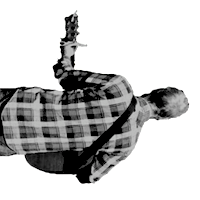How to Solve It - by George Polya
My Notes
“It is generally useless to carry out details without having seen the main connection, or having made a sort of plan.”
To solve a problem, we must -
- Understand the problem.
- Find the connection between what we know and don’t know
- Devise a plan.
- Carry out the plan.
- Examine the solution obtained (be willing to reconsider).
When we seek to understand a problem, we should ask -
- What is unknown?
- What’s the data?
- What’s the condition?
Devising a plan is often the most challenging part of problem-solving.
When a teacher gives her students a problem, she should be careful not to give any more hints than are necessary. Students must do a reasonable share of the work to learn.
Teachers should ask general questions when students are stuck. These questions can be made habitual and help the student in the future. Here are questions that can be applied to any problem in the future.
- Have you seen or worked a similar/related problem before?
- Can you recall a similar unknown?
- Can you restate the problem in a different way?
(Reminder: A derivative is the rate of change of a function).
When we have unknown data, we should ask if it’s independent of known data. i.e. As x increases, y increases too. They are dependent.
When you are presented with a new problem -
- Visualize it as vividly as possible. “Do not concern yourself with the details for the moment.”
- Get familiar with the problem, enough so that you will not forget it when you start working out the details. This means visualizing the details - unknown, data and condition - and how they relate to one another (for proofs, the details are the hypothesis and the conclusion).
- Hunt for helpful ideas. Approach the problem from different angles, with different emphasis, past experience.
- When you get an idea, think through it, see how far it will lead you. All the way? Partially? If not all the way, consider the idea as part of your data and seek more ideas. Be grateful for every idea, even if they lead you astray. Make a plan.
- Carry out your plan. If it’s a big problem, break it down into subproblems (which may have their own subproblems too).
- Reflect. Look back. Consider the solution from different sides. Check it. See if you can find a simpler way.
“If you get into the habit of (reflecting, looking back), you will acquire some knowledge well ordered and ready to use, and you will develop your ability of solving problems.”
